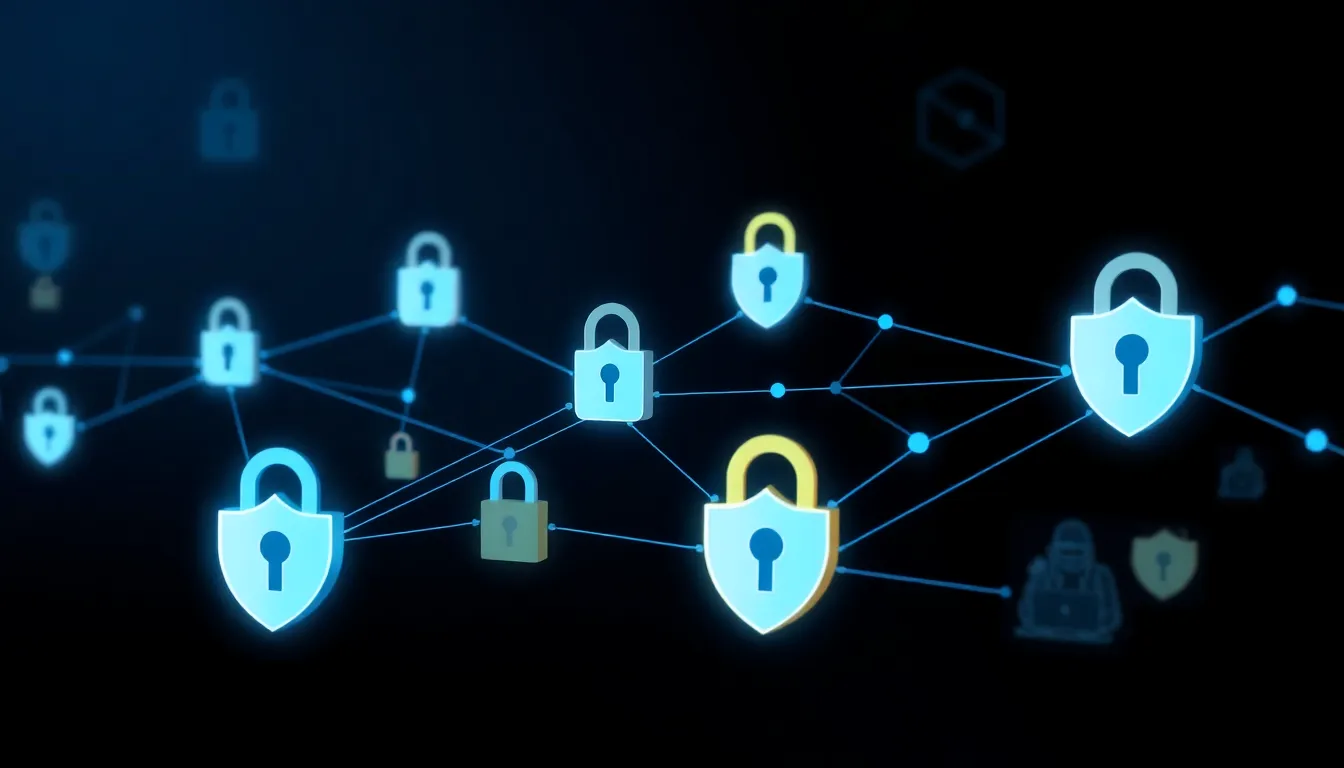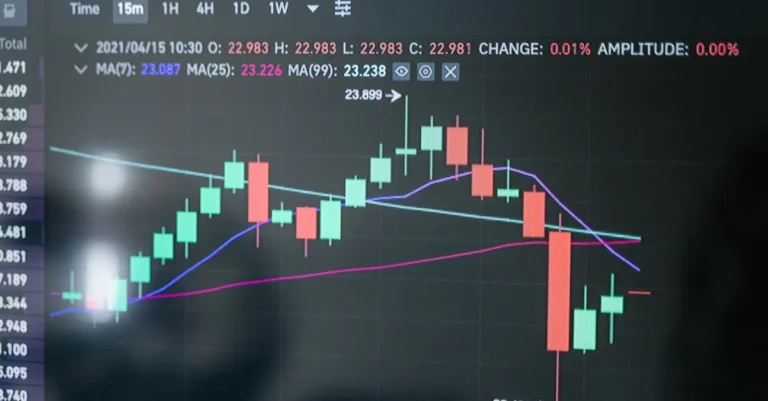In a world where cyber threats lurk around every digital corner, blockchain cybersecurity emerges as the superhero we never knew we needed. Imagine a fortress built from cryptographic bricks, standing tall against hackers and data breaches. That’s blockchain for you—it’s not just a buzzword; it’s a game changer.
Blockchain Cybersecurity
Blockchain cybersecurity safeguards digital information by using decentralized ledgers and cryptographic techniques. This approach enhances trust and security in data transactions across various sectors.
Definition of Blockchain Cybersecurity
Blockchain cybersecurity consists of protective measures applied to blockchain technology and its applications. It encompasses technologies that prevent unauthorized access, data breaches, and cyberattacks. Strategies include encryption, consensus algorithms, and distributed ledgers. With these methods, blockchain transforms traditional cybersecurity, offering transparent and tamper-proof systems for managing sensitive data. Organizations leverage these features to create secure digital environments.
Importance in the Digital Age
The significance of blockchain cybersecurity grows as cyber threats evolve. Protecting sensitive information prevents financial loss and enhances public trust in digital services. Companies, especially in finance and healthcare, depend on secure transactions to maintain operational integrity. According to the Cybersecurity & Infrastructure Security Agency, 80% of organizations view securing data as a top priority. Blockchain’s inherent security features align with these needs, making it an essential tool in the digital era. As cyber attacks become more sophisticated, robust cybersecurity measures become increasingly vital for organizations.
Common Threats to Blockchain Security

Blockchain technology faces several significant threats. Cyber attacks exploit various vulnerabilities, which can compromise security and trust in digital transactions.
Types of Cyber Attacks
Phishing attacks target individuals, tricking them into revealing sensitive information like private keys. DDoS attacks disrupt service availability by overwhelming network resources. 51% attacks occur when a single entity controls over half of the network’s computing power, allowing manipulation of transactions. Furthermore, malware can infiltrate wallets and exchanges, leading to unauthorized access and theft of digital assets. According to Cybersecurity & Infrastructure Security Agency, 80% of organizations prioritize data security, highlighting the urgency for proactive measures against these threats.
Vulnerabilities in Smart Contracts
Smart contracts often suffer from coding vulnerabilities, which can lead to unintended exploits. Reentrancy attacks, for instance, enable attackers to repeatedly call a function before the previous execution completes, draining funds. Unchecked input can allow for malicious transactions, jeopardizing the integrity of the contract. Additionally, inadequate testing may leave contracts susceptible to bugs or errors, further facilitating security breaches. Organizations must emphasize thorough code audits and security measures to mitigate these risks.
Best Practices for Enhancing Security
Enhancing blockchain security involves various strategies that minimize vulnerabilities and strengthen defenses. Organizations can adopt several best practices to protect their digital assets effectively.
Implementing Multi-Signature Wallets
Utilizing multi-signature wallets significantly enhances security. Multi-signature technology requires multiple keys to authorize transactions, making unauthorized access more difficult. This approach reduces reliance on a single point of failure. By distributing control among several authorized users, organizations mitigate risks related to theft and loss. Implementing this solution aligns with the 80% of organizations that prioritize data security, ensuring heightened protection against potential threats.
Regular Security Audits
Conducting regular security audits proves essential for maintaining blockchain integrity. Auditing processes identify vulnerabilities, outdated protocols, and compliance gaps. Assessments often reveal weaknesses in smart contracts and can guide necessary improvements. Engaging third-party security experts can provide unbiased evaluations and fresh perspectives. Regular audits support the urgent need for proactive measures against cybersecurity threats, aligning with the commitment of 80% of organizations to prioritize data security.
The Role of Cryptography in Blockchain
Cryptography plays a crucial role in ensuring blockchain security. It underpins transactions, preventing unauthorized access and maintaining data integrity.
Hash Functions
Hash functions create unique outputs for every input, transforming data into fixed-length strings. These functions contribute to blockchain’s immutability, meaning once data is added, it cannot be altered without detection. Hashing enables efficient storage and retrieval of data while also verifying the authenticity of transactions. By ensuring any alteration of input results in a completely different hash, these functions safeguard against tampering. High-quality hash algorithms, such as SHA-256, are widely utilized across major blockchain platforms. They provide secure methods to track transaction history without compromising user privacy.
Digital Signatures
Digital signatures authenticate transactions using cryptographic keys. Each participant in the blockchain holds a private key to sign transactions, creating a unique signature that validates their identity. This method prevents unauthorized transactions and protects the sender’s data. The corresponding public key allows anyone to verify the signature easily. Digital signatures enable transparent and secure interactions among users. By improving trust among parties, they enhance overall transaction security. This trust is essential, especially as 80% of organizations prioritize data security, aligning with the increasing demand for efficient and reliable transactions.
Future Trends in Blockchain Cybersecurity
The landscape of blockchain cybersecurity continues to evolve rapidly. Emerging technologies play a significant role in shaping the future of this field.
Emerging Technologies
Artificial intelligence enhances threat detection within blockchain systems. Machine learning algorithms analyze patterns in transactions to identify anomalies. Quantum computing poses both challenges and opportunities for cryptography used in blockchain, enabling stronger encryption methods. Developers increasingly focus on implementing secure hardware solutions, such as secure enclaves, to protect sensitive data. As decentralized applications gain traction, focus on integrating robust security features during the development process strengthens overall resilience. Additionally, interoperability between different blockchain systems is becoming crucial, as it ensures seamless communication while maintaining security standards. The adoption of privacy-preserving protocols further emphasizes the commitment of organizations to safeguard user information amidst growing cyber threats.
Regulatory Developments
Regulatory frameworks increasingly impact blockchain cybersecurity practices. Governments are beginning to establish guidelines to protect digital assets and enhance security measures. Compliance with regulations, such as the General Data Protection Regulation (GDPR), requires organizations to prioritize data privacy and security. Increased scrutiny on cryptocurrency exchanges demands robust cybersecurity protocols to prevent hacks and data breaches. In addition, industry-specific regulations, particularly in finance and healthcare, shape security standards for blockchain implementations. Collaboration among various stakeholders, including regulators and technology providers, fosters a proactive approach to developing secure blockchain ecosystems. As cyber threats grow, adherence to these regulations will reinforce the commitment to security and user trust in digital services.
Conclusion
The evolving landscape of cyber threats demands innovative solutions like blockchain cybersecurity. Its decentralized nature and cryptographic techniques create a robust defense against unauthorized access and data breaches. Organizations can significantly enhance their security posture by adopting best practices and prioritizing data integrity.
As technology advances, the role of blockchain in safeguarding sensitive information will only grow. The integration of emerging technologies and adherence to regulatory guidelines will further solidify blockchain’s position as a cornerstone of cybersecurity. By fostering collaboration among stakeholders, the digital ecosystem can thrive in a secure environment, ensuring trust and safety for all users.





